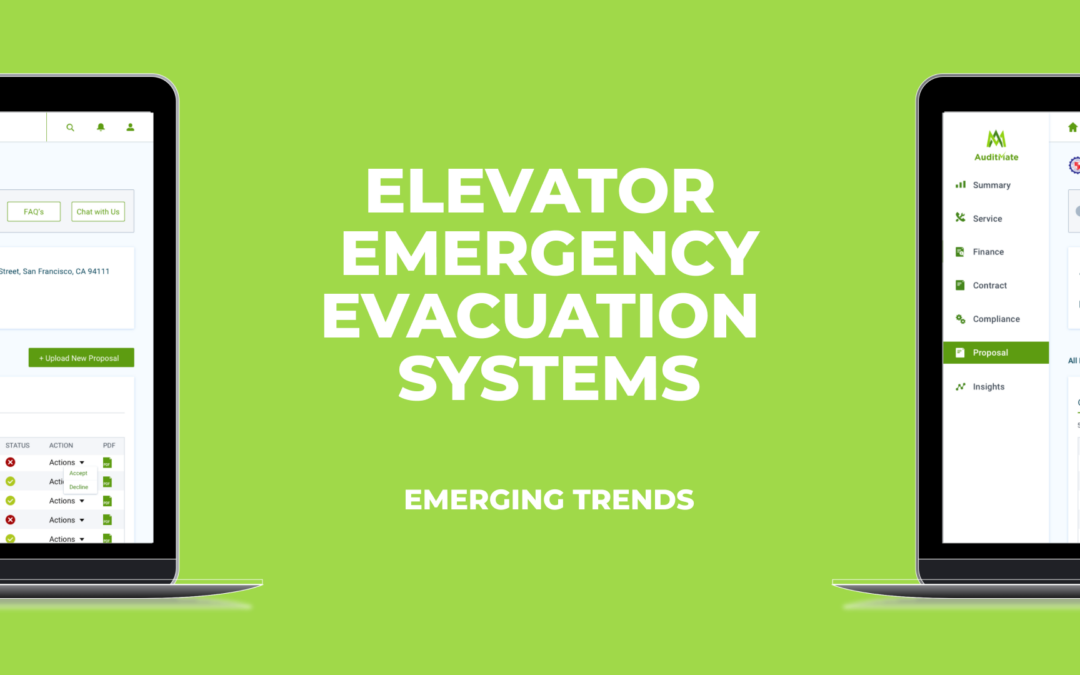Imagine that one of your customers are trapped in one of your elevators, panicking as the lights flicker and the car jolts between floors. Now imagine having an evacuation system that could get you out of that nightmare scenario quickly and safely. That’s the promise of the latest technologies in elevator emergency systems. As building owners and facilities executives know, elevators are complex machines that require diligent maintenance and upkeep. Keeping them running smoothly is a constant battle, but new smart systems are
IoT Sensors Enable 24/7 Monitoring
Manual inspections for elevators are a thing of the past. Internet of Things (IoT) sensors now allow real-time tracking of position, speed, door functionality and more. Software dashboards provide 24/7 monitoring, predicting outages before they happen.
When an emergency occurs, managers get instant alerts and can deploy immediate response. Elevators are shifting from reactive to predictive systems.
Advanced Communication Connects Passengers and Responders
Two-way video, voice and smartphone tools are replacing old alarms and intercoms. Trapped passengers can give real-time updates on injuries, location and more to emergency crews. This allows responders to arrive fully prepared with proper equipment.
Smarter Designs Focus on Safety and Accessibility
State-of-the-art elevators have built-in systems to detect fires or other hazards. Cars can be programmed to avoid dangerous floors and reroute to the nearest exit. Backups power sources move stranded elevators to the lowest landing for evacuation.
Enhanced voice guidance and priority evacuation ensure those with disabilities are assisted quickly. Safety for all passengers is a top priority.
Regulations Push Adoption of New Technologies
Stricter safety rules and enforcement are also driving adoption. Requirements like emergency phones, occupancy limits and maintenance logs are becoming mandatory.
To meet these standards, building owners are relying on qualified vendors with the latest innovations and diligent maintenance regimens. Management platforms like AuditMate help ensure compliance requirements don’t slip through the cracks.
The Need for Safety Upgrades is Clear
Statistics show the critical need for improved safety systems. Elevator accidents cause approximately 30 deaths and 17,000 injuries annually in the United States (U.S. Bureau of Labor Statistics).
And the average cost of elevator downtime exceeds $100,000 per year for building owners, highlighting the economic value of predictive maintenance (major elevator company study).
Despite Challenges, The Future Looks Bright
While cost and integration issues remain, the elevator industry is embracing smarter designs. With real-time insights and advanced communication, the risks of entrapment and injury are minimized.
Building owners are realizing that integrating new technologies, despite the challenges, can pay dividends in safety and performance. With innovative systems and vigilant maintenance, the future looks bright for rapid, effective emergency evacuation.
Let me know if you would like me to expand or modify any other sections. I can incorporate additional statistics or details as needed.

Frequently Asked Questions | AuditMate
FAQs
What are some key benefits of IoT-enabled elevator systems?
IoT-enabled elevator systems allow for real-time monitoring and data collection. This allows potential issues to be identified early and predictive maintenance to be performed. IoT systems also enable instant emergency notifications and response.
How are two-way communication systems improving elevator emergencies?
New two-way systems allow trapped passengers to communicate directly with emergency responders using video, voice and other tools. This provides critical information to rescue crews before they arrive on scene.
How are elevators being made more accessible during emergencies?
New elevator emergency systems focus on assisting mobility-impaired passengers through voice guidance and priority evacuation protocols. This ensures those with disabilities are safely evacuated.
What regulations are driving the adoption of newer elevator safety technologies?
State and local governments are enacting stricter elevator safety rules and enforcement on things like emergency phones, maintenance logs and occupancy limits. Building owners rely on vendors to help adhere to these latest regulations.
How can software like AuditMate improve elevator safety and maintenance?
AuditMate provides helpful tools to simplify vendor management such as: real-time contract tracking, automated maintenance logs, inspection checklists, vendor analytics and safety regulation guidance. This ensures standards don’t slip.

